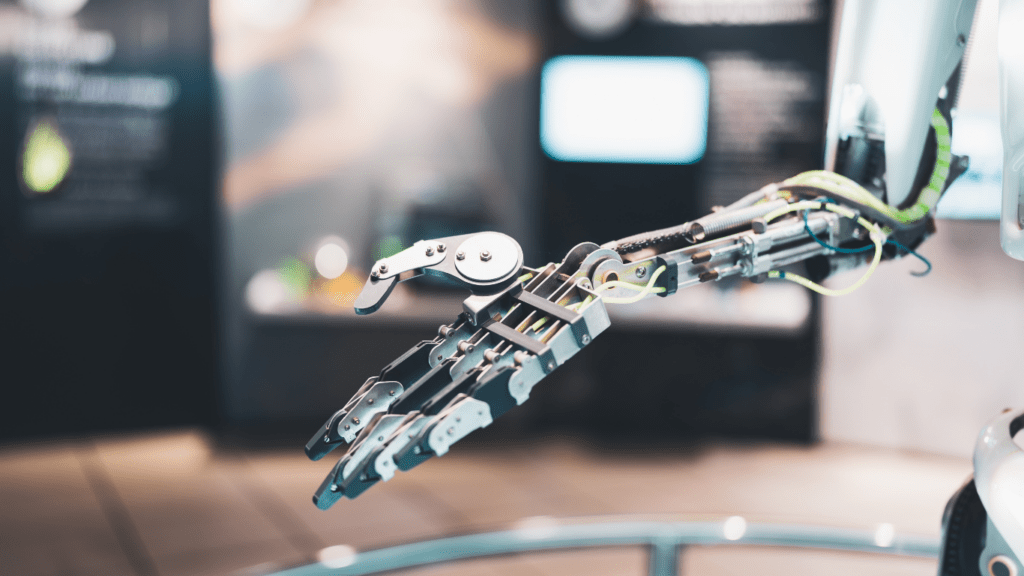In the fast-evolving landscape of technology, breakthroughs in Artificial Intelligence and Machine Learning have been revolutionizing industries and shaping our future. As an AI enthusiast, I’m constantly amazed by the rapid advancements that are pushing the boundaries of what was once thought possible. From self-driving cars to personalized recommendations, AI and ML are transforming the way we live and work.
In this article, I’ll delve into some of the recent breakthroughs in AI and ML that are making waves across various sectors. As I explore the cutting-edge developments in algorithms, neural networks, and data processing, you’ll discover how these innovations are enhancing efficiency, driving innovation, and opening up new possibilities. Join me on this journey through the exciting world of Artificial Intelligence and Machine Learning breakthroughs.
Understanding Breakthroughs in AI and ML
Defining AI and ML
I delve into the world of Artificial Intelligence (AI) and Machine Learning (ML). AI refers to the simulation of human intelligence processes by machines, while ML is a subset of AI that allows systems to learn from data and improve without explicit programming. These technologies are revolutionizing industries and shaping our future.
Historical Milestones
I explore the historical milestones that paved the way for the current breakthroughs in AI and ML. From the Dartmouth Conference in 1956, where the term AI was coined, to the development of neural networks in the 1980s and the breakthroughs in deep learning and reinforcement learning in recent years, each milestone has propelled the field forward.
Key AI and ML Breakthroughs of the Past Decade
In the realm of Artificial Intelligence and Machine Learning, the past decade has witnessed remarkable advancements that have revolutionized various sectors. Let’s explore some of the key breakthroughs that have shaped the landscape of AI and ML.
Advances in Natural Language Processing
In recent years, Natural Language Processing (NLP) has seen significant progress, particularly with the development of transformer models like BERT (Bidirectional Encoder Representations from Transformers) and GPT-3 (Generative Pre-trained Transformer 3). These models have greatly enhanced machines’ ability to understand and generate human-like text, leading to improvements in language translation, sentiment analysis, and chatbots.
Improvements in Computer Vision
The field of Computer Vision has seen remarkable advancements with the rise of convolutional neural networks (CNNs) and deep learning algorithms. Breakthroughs like object detection, image segmentation, and facial recognition have transformed various industries, including healthcare, security, and autonomous driving systems. The accuracy and speed of visual recognition tasks have significantly improved, paving the way for more sophisticated applications.
Innovations in Autonomous Vehicles
Autonomous vehicles have witnessed groundbreaking innovations in the past decade, thanks to advancements in AI and ML. Technologies such as reinforcement learning, sensor fusion, and decision-making algorithms have enabled self-driving cars to navigate complex environments, interpret real-time traffic data, and make split-second decisions to ensure passenger safety. These innovations have the potential to revolutionize transportation systems and reduce road accidents significantly.
Implications of Recent AI and ML Breakthroughs
As we delve into the implications of recent AI and ML breakthroughs, it’s evident that these advancements have far-reaching effects on various sectors, transforming the way industries operate and enhancing outcomes through cutting-edge technologies.
Impact on Healthcare
In healthcare, the integration of AI and ML technologies has revolutionized patient care and medical research. AI algorithms can analyze vast amounts of data to predict diseases, personalize treatment plans, and improve diagnostic accuracy. Machine learning models aid in identifying patterns in patient data, enabling early detection of illnesses and proactive interventions. Additionally, AI-powered robotics assist in surgeries, making procedures safer and more precise, ultimately enhancing patient outcomes.
Changes in Automation and Manufacturing
The impact of AI and ML breakthroughs on automation and manufacturing is profound. These technologies optimize production processes, leading to increased efficiency, reduced operational costs, and enhanced productivity. AI-driven predictive maintenance systems can anticipate equipment failures, minimizing downtime and ensuring continuous operations. Machine learning algorithms streamline supply chain management, predicting demand patterns and optimizing inventory levels, thereby improving overall operational performance.
Influence on Data Security
AI and ML advancements have significantly influenced data security measures across industries. Machine learning algorithms can detect anomalies in network traffic, identify potential cybersecurity threats, and enhance real-time monitoring for immediate responses to security breaches. AI-powered cybersecurity tools bolster defense mechanisms, proactively safeguarding sensitive data and mitigating risks posed by evolving cyber threats. By leveraging AI and ML technologies, organizations can fortify their cybersecurity posture and protect critical information assets from malicious activities.
The Role of Ethics and Regulations

Delving into the ethical considerations in AI development, it’s crucial to address the potential biases embedded in algorithms that can result in discriminatory outcomes. I advocate for transparent AI systems that prioritize fairness by mitigating biases and ensuring accountability in decision-making processes. Ensuring diversity in data collection and model training is essential to fostering inclusive AI technologies that serve diverse populations effectively.
Transitioning to regulatory challenges, navigating the evolving landscape of AI governance requires close collaboration among policymakers, industry experts, and ethicists. I emphasize the importance of establishing clear guidelines and standards to govern AI applications, balancing innovation with responsible use. Adhering to robust regulatory frameworks is pivotal in addressing privacy concerns, data protection, and algorithmic transparency, fostering trust in AI systems and promoting ethical AI adoption.
Future Trends in AI and ML
Moving forward, the future of Artificial Intelligence (AI) and Machine Learning (ML) holds exciting possibilities. Here are some predictions for the next decade and the role of Quantum Computing in AI.
Predictions for the Next Decade
- Quantum AI Integration: Quantum computing will revolutionize AI by significantly enhancing processing power, enabling the development of more advanced algorithms for complex problem-solving.
- AI Democratization: AI and ML tools will become more accessible to smaller businesses and individuals, leading to widespread integration across diverse sectors and driving innovation.
- Ethical AI Implementation: There will be a heightened focus on embedding ethics into AI systems to ensure transparency, fairness, and accountability in decision-making processes.
- Personalized AI Experiences: AI will personalize user experiences further by leveraging vast amounts of data to tailor solutions and recommendations to individual preferences.
- Enhanced Processing Speed: Quantum computing’s ability to process vast amounts of data simultaneously will accelerate AI model training and optimization, leading to breakthroughs in various applications.
- Solving Complex Problems: Quantum AI hybrid systems will tackle intricate problems in diverse fields such as drug discovery, weather forecasting, and financial modeling, surpassing classical computing limitations.
- Quantum Neural Networks: Quantum computing will enable the development of Quantum Neural Networks, offering more efficient solutions for complex learning tasks in AI and ML.
- Quantum Security: Quantum technologies will strengthen cybersecurity measures by creating unhackable encryption methods, ensuring data privacy and security in AI applications.



